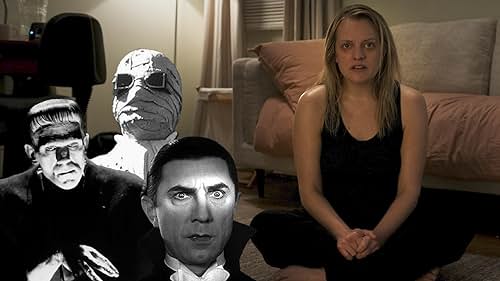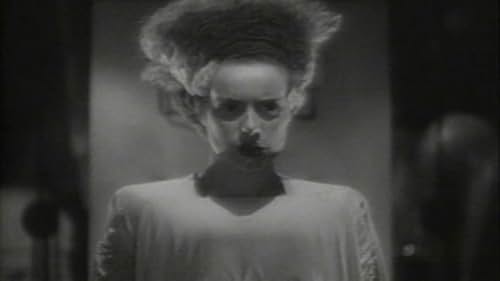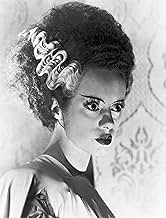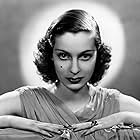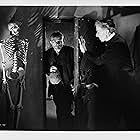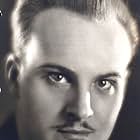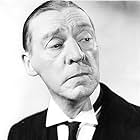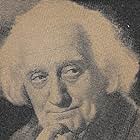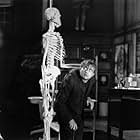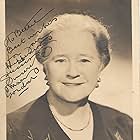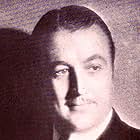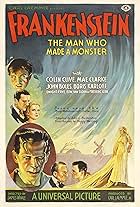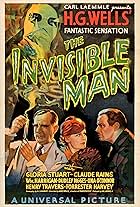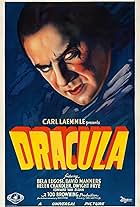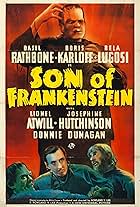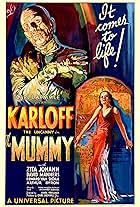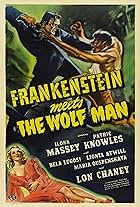IMDb RATING
7.8/10
55K
YOUR RATING
Mary Shelley reveals the main characters of her novel survived: Baron Henry Frankenstein, goaded by an even madder scientist, builds his monster a mate.Mary Shelley reveals the main characters of her novel survived: Baron Henry Frankenstein, goaded by an even madder scientist, builds his monster a mate.Mary Shelley reveals the main characters of her novel survived: Baron Henry Frankenstein, goaded by an even madder scientist, builds his monster a mate.
- Nominated for 1 Oscar
- 5 wins & 4 nominations total
Boris Karloff
- The Monster
- (as Karloff)
Anne Darling
- Shepherdess
- (as Ann Darling)
Robert Adair
- Hunter in Woods
- (uncredited)
Norman Ainsley
- Archbishop
- (uncredited)
Storyline
Did you know
- TriviaCinematographer John Mescall's drinking had become so problematic that the studio had to provide a car to get him safely to and from the set. James Whale liked that he worked fast and rarely wasted time fussing with incidental camera and lighting hardware. He was still very good at his job, even when drunk.
- GoofsIn the prologue explaining what happened in the first Frankenstein (1931), a man is shown in close-up being strangled by the monster; however, the monster's sleeves are torn and his arms already burned by the windmill fire. Clearly this close-up was newly filmed and inserted as if from the 1931 movie.
- Quotes
Doctor Pretorius: To a new world of gods and monsters!
- Crazy creditsIn the opening and closing credits, "The Monster's Mate" is listed as being played by "?." Elsa Lanchester is only billed as playing Mary Shelley.
- Alternate versionsThe Director's cut was 87 minutes long, but Producer Carl Laemmle Jr. imposed a number of cuts, to tame down the Director's "excesses". The Prologue was cut (making difficult to understand the present dialogue), the body count was reduced from 21 to 10, two love scenes between the couple and a toy representing the Monster with a child have been deleted. This ammount of 12-minute footage has subsequently been lost, making it impossible to reconstruct the initial idea by 'James Whale'.
- ConnectionsEdited into House of Dracula (1945)
- SoundtracksFrühlingslied (Spring Song) Op.62 #6
(1842) (uncredited)
Written by Felix Mendelssohn
Danced by Marie DeForrest
Featured review
When Ernest Thesiger points and says, "The bride of Frankenstein," rolling his r's, he creates one of the greatest scenes in cinematic history. I do consider the second film superior to the first (though I love them both) because of the complexity of the characters and, more specifically, the monster. In Shelley's book the monster is lonely but articulate. He seeks out a bride. Frankenstein creates one but then destroys her, making his creature furious and vengeful. This monster actually has a kind part to him. For him to be blunt force thug can only go so far. It works in the first film but how much more growling and stomping could there be? The scenes of him wandering in the countryside, meeting the lonely old blind man in the house in the woods, and being shown kindness by him is very touching. The monster is allowed some humanity; some privacy. We know this can't last because his creator has doomed him. We often see Victor as some kind of hero, but, in reality, he has committed an incredible sin against another being. He wants a companion, but she turns on him and destroys his hope.
The setup, with Elsa Lanchester as Mary Shelley, talking with the foremost romantic poets of the time, Percy Shelley and Lord Byron (who also rolls his r's), is a great lead in as she brags about writing a story that will make your skin crawl. She must have been something in that male dominated society. Of course, her mother was one of the first to demand rights for women. When she reappears as the Bride, it is awesome. And who came up with the hair. It is one of those things like the monster's neck bolts, that has become such an icon for our culture.
These early Universal films deserve to be judged as major movies. Just because the subject is horror, doesn't mean they should be dismissed. James Whale was a great director with an amazing vision.
The setup, with Elsa Lanchester as Mary Shelley, talking with the foremost romantic poets of the time, Percy Shelley and Lord Byron (who also rolls his r's), is a great lead in as she brags about writing a story that will make your skin crawl. She must have been something in that male dominated society. Of course, her mother was one of the first to demand rights for women. When she reappears as the Bride, it is awesome. And who came up with the hair. It is one of those things like the monster's neck bolts, that has become such an icon for our culture.
These early Universal films deserve to be judged as major movies. Just because the subject is horror, doesn't mean they should be dismissed. James Whale was a great director with an amazing vision.
Details
- Release date
- Country of origin
- Official site
- Language
- Also known as
- La novia de Frankenstein
- Filming locations
- Production companies
- See more company credits at IMDbPro
Box office
- Budget
- $397,024 (estimated)
- Gross worldwide
- $11,533
- Runtime1 hour 15 minutes
- Color
- Aspect ratio
- 1.37 : 1
Contribute to this page
Suggest an edit or add missing content



